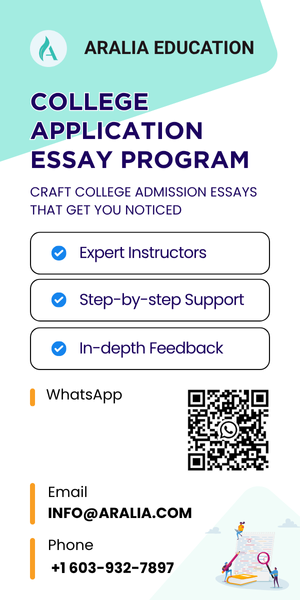Why Is It Difficult to Read Shakespeare?
Students often wonder why reading Shakespeare tends to feel challenging. A key factor for this is that his plays were written over 400 years ago, and since then, the English language has dramatically changed.
Research shows that students often face these common challenges when reading Shakespeare:
- Vocabulary: Many words have either become archaic or changed meaning over time, making them difficult to understand. This is why most editions provide glossaries or footnotes to help clarify unfamiliar terms.
- Sentence structure: Shakespeare frequently uses inverted word order, as opposed to the standard word order modern readers are used to.
- Metaphors and imagery: His plays are rich in poetic language and symbolism, which leads to multiple interpretations.
- Cultural references: Knowledge of Elizabethan history, mythology, and their daily life is needed to grasp certain passages.
Interestingly, these are common problems for both native and non-native English speakers. However, students with a background in earlier historical periods may find it easier to understand and recognize the references in Shakespeare’s works.
Reading Shakespeare often aids students in growing intellectually and creatively. His works transcend literature; they portray human nature, history, and the endurance of language. Through themes of love, ambition, betrayal, and identity, students gain insights into emotions and situations that remain relevant today. Beyond the stories, Shakespeare’s use of language sharpens vocabulary, wit, and critical thinking, making the experience rewarding.
To make this journey easier, here’s an outline of what to do before, during, and after reading Shakespeare.
Enhance Your Research Skills with Aralia’s Research Scholar Classes
Before Reading Shakespeare
1. Choose the Right Text
Before diving into Shakespeare, picking the right edition is key. His works are available in various editions—original texts, modernized versions, annotated editions, and unannotated ones. The version you pick shapes your first impression and strongly influences whether the experience feels engaging or overwhelming. For most beginners, a modernized edition with annotations is the best starting point: the language is eased to Modern English, while the notes contextualize unfamiliar terms and cultural references.
Modernized vs. Original Texts
Modernized editions revamp the old-fashioned language and grammar, making them beginner-friendly. Original texts, however, preserve the rhythm and richness of Elizabethan English (the form of English used during the reign of Queen Elizabeth I, from the late 1500s to the early 1600s). While it shares similarities with Modern English, it contains unfamiliar vocabulary, unusual word order, and outdated expressions. If you’re just starting, a modernized version may be a gentler entry point, but once you’re comfortable, exploring the original text will deepen your appreciation.
Annotated vs. Non-Annotated Texts
Annotations are your best friend when reading Shakespeare. They explain obscure words, historical references, and cultural details. One excellent choice is the Oxford School Shakespeare series, which includes synopses, commentary, line-by-line notes, discussion questions, and even photos of live performances. These extras ease the flow of following along with comprehension.
Suggested Plays for Beginners
- Romeo and Juliet: A perfect starting point if you’re nervous about the language. The world’s most famous love story is familiar to most readers, and Baz Luhrmann’s 1996 film adaptation is also a great way to help students better understand the text.
- A Midsummer Night’s Dream: One of Shakespeare’s most accessible plays, mixing romance, comedy, and magic in a fairy-tale forest.
- Julius Caesar: A political drama full of betrayal and conspiracy, but best remembered for its powerful speeches and flawless rhythm.
- As You Like It: Lighthearted and surprisingly modern in its humor.
- Macbeth: Short, intense, and action-packed, Macbeth is Shakespeare’s ultimate thriller. Its famous soliloquies and morally complex characters make it unforgettable.
2. Understand Shakespeare’s Vocabulary and Grammar
Shakespeare’s language reflects the English of his time. Some words look familiar but carry different meanings, while others have gone extinct. Here are some common “Shakespeareisms”:
- Thee/Thou/Thy/Thine = You/Your
- Art = Are (“Thou art a villain.” → “You are a villain.”)
- Ay = Yes
- Would = Wish (“I would I were…” → “I wish I were…”)
- Alas = Unfortunately
- Adieu = Goodbye
- Sirrah = Sir/Mister
- -eth endings = verbs in modern English (e.g., “speaketh” = “speak”)
- Absence of “don’t/do/did”: “What looked he like?” instead of “What did he look like?”
A tip for students is to keep an online Shakespearean glossary handy while reading. The British Council also lists idioms and phrases Shakespeare invented to help you better understand his language.
While Reading Shakespeare
Getting through a Shakespeare play is less about speed and more about strategy. Here are some ways to make the reading process smoother for students:
- Read slowly and reread: Shakespeare’s lines are packed with meaning, so don’t expect to understand everything on the first try. Take your time, pause, and revisit passages. The more you read, the more the rhythm and language begin to click.
- Take notes: Have a notebook for jotting down unfamiliar words, character motivations, or passages that stand out. These make it easier to track themes and revisit important details later.
- Use additional resources: A good dictionary, glossary, or even quick internet searches can come in handy when you come across unusual words or cultural references. Don’t be afraid to look things up, because that’s part of the learning process.
- Make a family tree: With Shakespeare’s often large casts, it’s easy to lose track of who’s related to whom. Sketching out a simple character map or family tree helps you stay oriented with less confusion.
After Reading Shakespeare
Finishing a Shakespeare play doesn’t mean the journey is over; it’s often just the beginning. Once you’ve read through the text, there are several ways to enrich your insights from his works.
1. Discuss the Play
Discourses can reveal things you might have missed. Discussing with teachers or friends often brings new insights, different interpretations, and fresh perspectives on characters or themes.
2. Read Commentaries
Scholarly works provide historical context, clarifications, and literary analysis. Some highly recommended resources include:
- Shakespeare: The Invention of the Human by Harold Bloom
- The Oxford Companion to Shakespeare
- Shakespeare After All by Marjorie Garber
The Folger Shakespeare Library also has a collection of explanatory articles and free resources for students. Even differing opinions with the authors give you a strong starting point for thinking critically about Shakespeare’s works.
3. Watch Performances
Shakespeare wrote his plays to be performed, not just read. Watch how a stage production or film adaptation brings the dialogue to life, highlights the emotions and character motivations, and shows how directors and actors interpret the text.
Unlock Your Writing Potential: Students in Our Writing Competition Preparation Class Are More Likely to Secure Awards
Tips for First-Time Readers
If you’re new to Shakespeare, the key is to make the text digestible and enjoyable. Try these strategies:
- Read aloud: Shakespeare’s words were meant to be spoken because they’re plays. Hearing the rhythm and flow of the lines makes their intentions clearer.
- Watch while you read: Pair the text with a film or stage version. Seeing the characters in action will provide you with more context to understand the dialogue and plot.
- Read in small sections: Don’t feel like you have to tackle an entire play at once. A scene or two at a time is enough to build understanding without feeling overwhelmed.
- Start from famous passages: Begin with iconic lines like “To be or not to be” or “All the world’s a stage,” then read around them. These moments familiarize and ease you into the plays.
- Pay attention to punctuation: Colons, semicolons, and periods usually mark the end of a thought. Treat them as cues to pause.
- Seek guidance: Don’t hesitate to ask teachers, instructors, or experienced readers for help. Sometimes a quick explanation is all it takes to untangle a difficult passage.
Reading Shakespeare doesn’t have to be stressful. With patience and a few helpful strategies, his plays can be enjoyable and meaningful. His characters and stories illustrate choices still relevant today. By observing the language, watching performances, and discussing the plays, students can enjoy Shakespeare while improving their reading and thinking skills.
Read Shakespeare with Expert Guidance
If you’re a student in Grades 8–12 attending a U.S. high school or international school, now is the perfect time to explore Shakespeare’s works more critically. Participate in Aralia’s latest Shakespeare Literature class! Whether you read Shakespeare for the first time or preparing for college-level literary analysis, this course offers a structured method in engaging and empowering ways to master his timeless works.

Shakespeare Literature
In Shakespeare Literature, teacher guide students through analyzing Shakespeare’s masterful use of language, his ability to create complex characters, and the exploration of timeless themes. Students will explore more about his work through reading, discussion, and analysis in this course.









